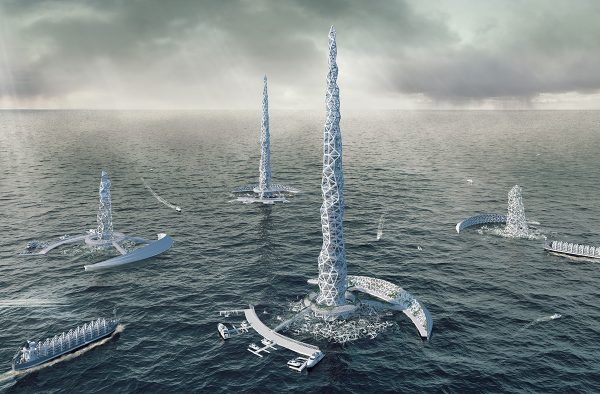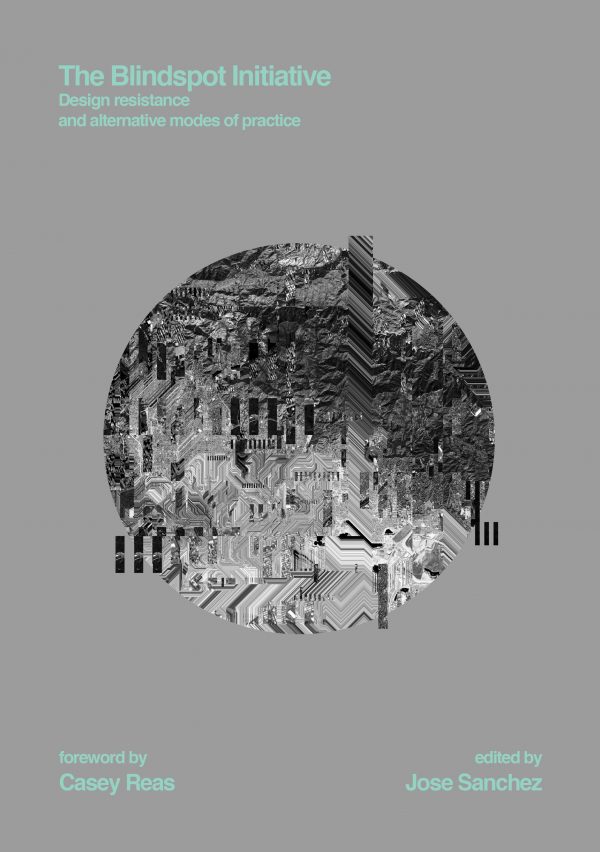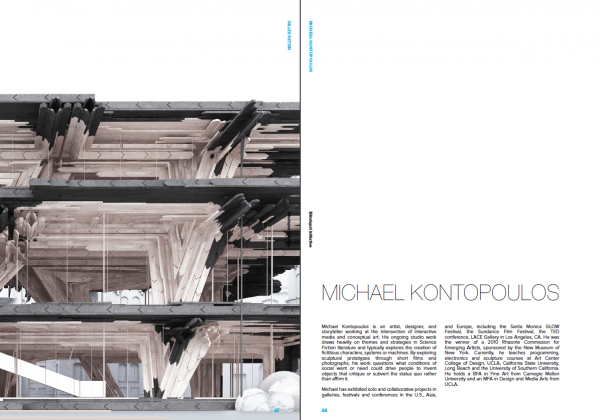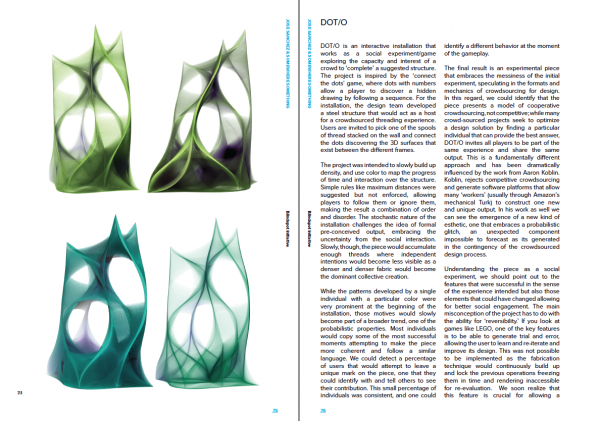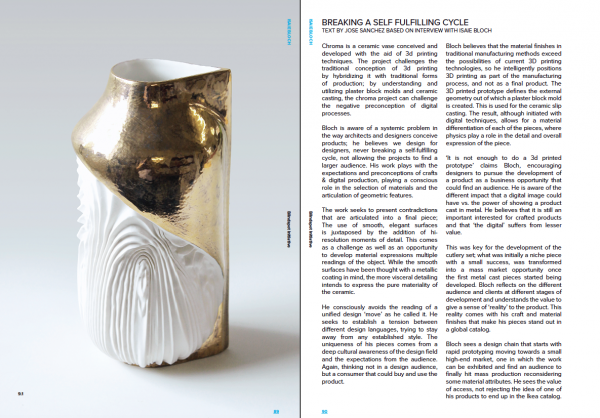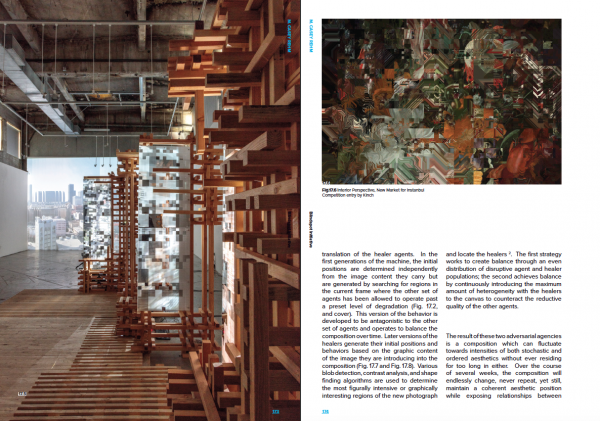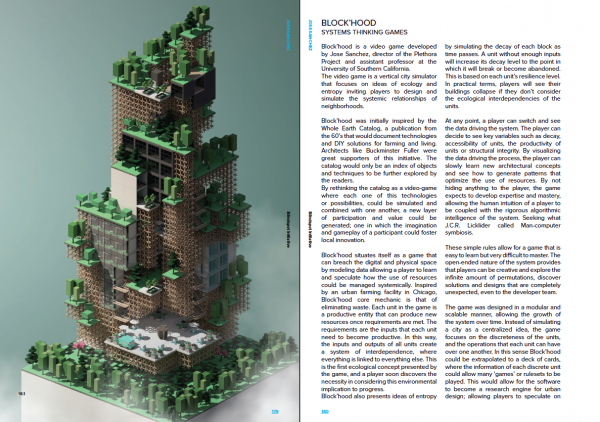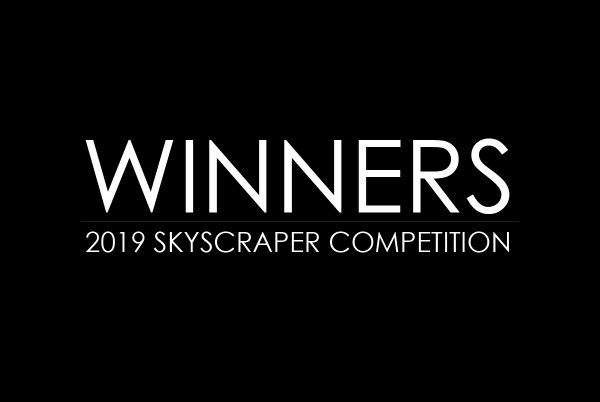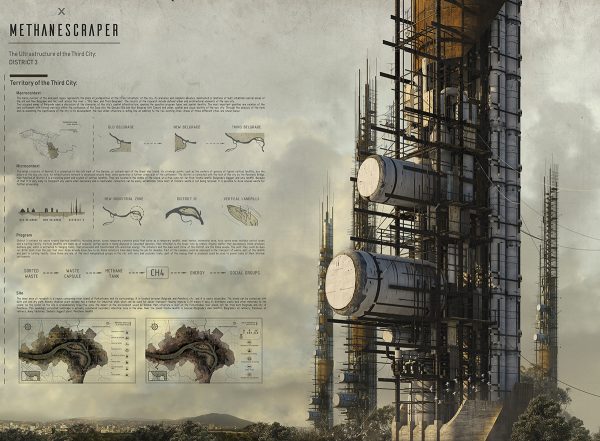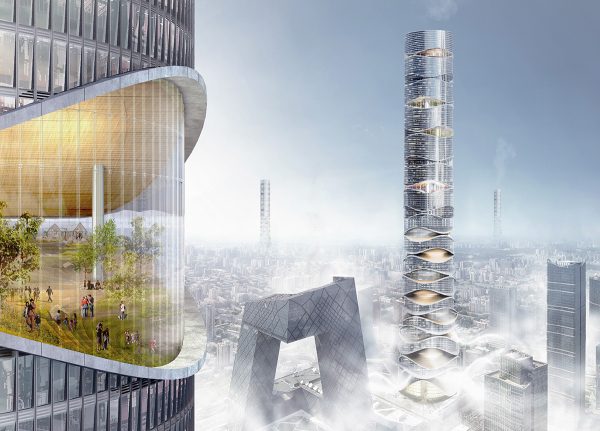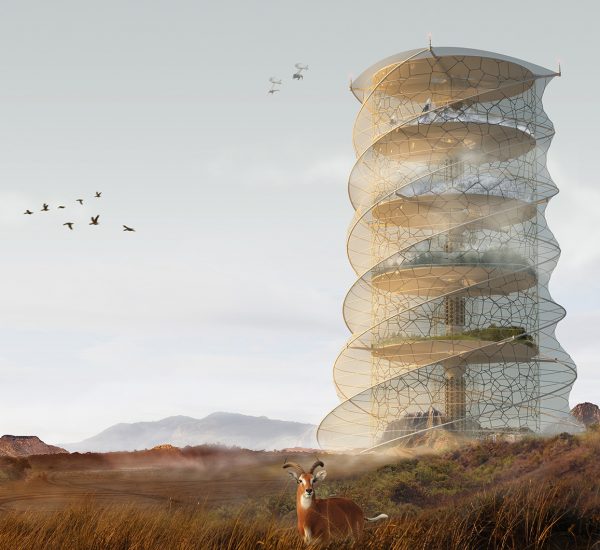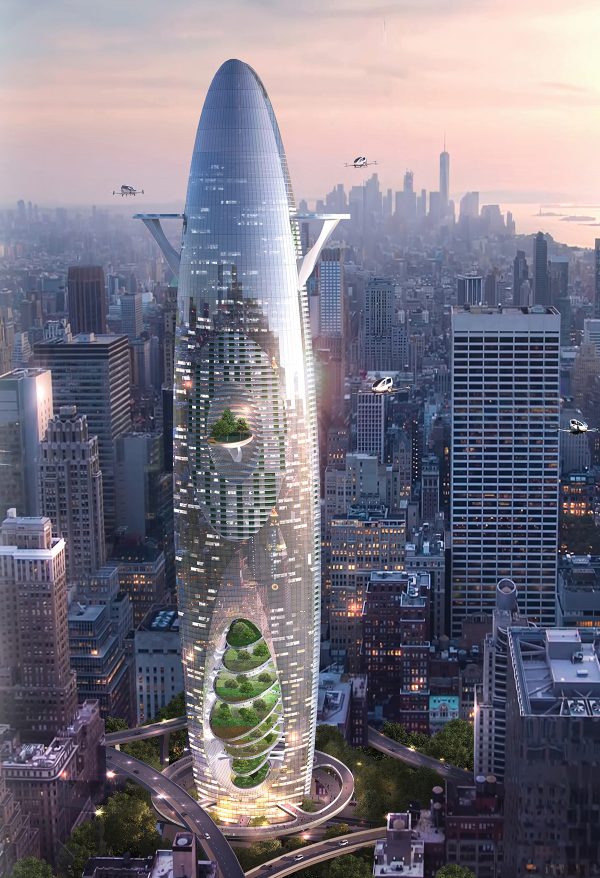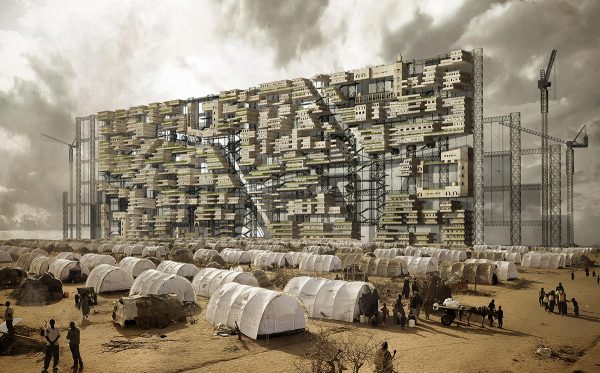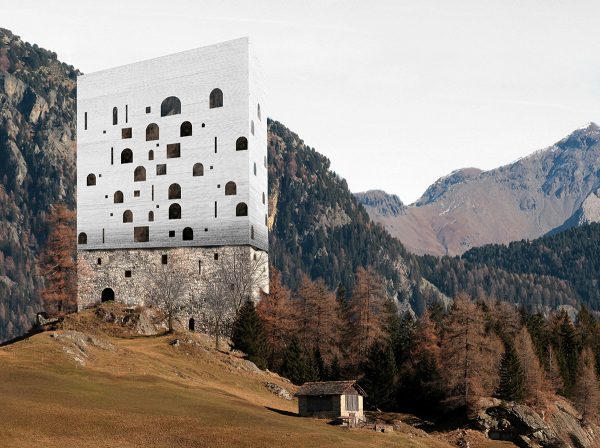Editors’ Choice
2019 Skyscraper Competition
Jo Palma + Partners Corporation
United States
The Atlântica self-rising tower investigates the future of construction and explores the boundaries of automated building assembly and self-organization. Inspired by the behavior of insects like ants, termites and bees and their ability to construct large-scale habitats for their communities, research and investigations on self-assembling components demonstrate the potential future for construction. Envisioning that building parts can organically self-assemble into optimal, self-supporting configurations in an oceanic environment, the Atlântica tower concept challenges the ordinary construction process by building from top to bottom and from underwater up.
By utilizing a magnetic system embedded in the structural frame of the individual components, the building members could be joined together based on predefined and optimized geometry and construction sequencing algorithms. The building form would change based on the number of members deployed underwater, which could be continuously modified by addition or subtraction. These modular components would be produced off-site, shipped to desired assembly location and released underwater, allowing the self-assembly process to begin. Triggered by increased water entropy, the individual pieces would find their adjacent matches and start the forming process of the structure.
The modular framework of the Atlântica tower allows for different program types with easy adaptability. From housing, lodging and working uses to vertical farming and sky gardens, Atlântica could become a community within itself. Read the rest of this entry »

